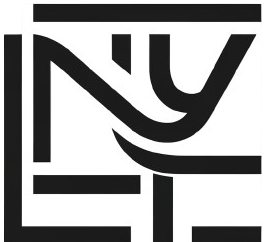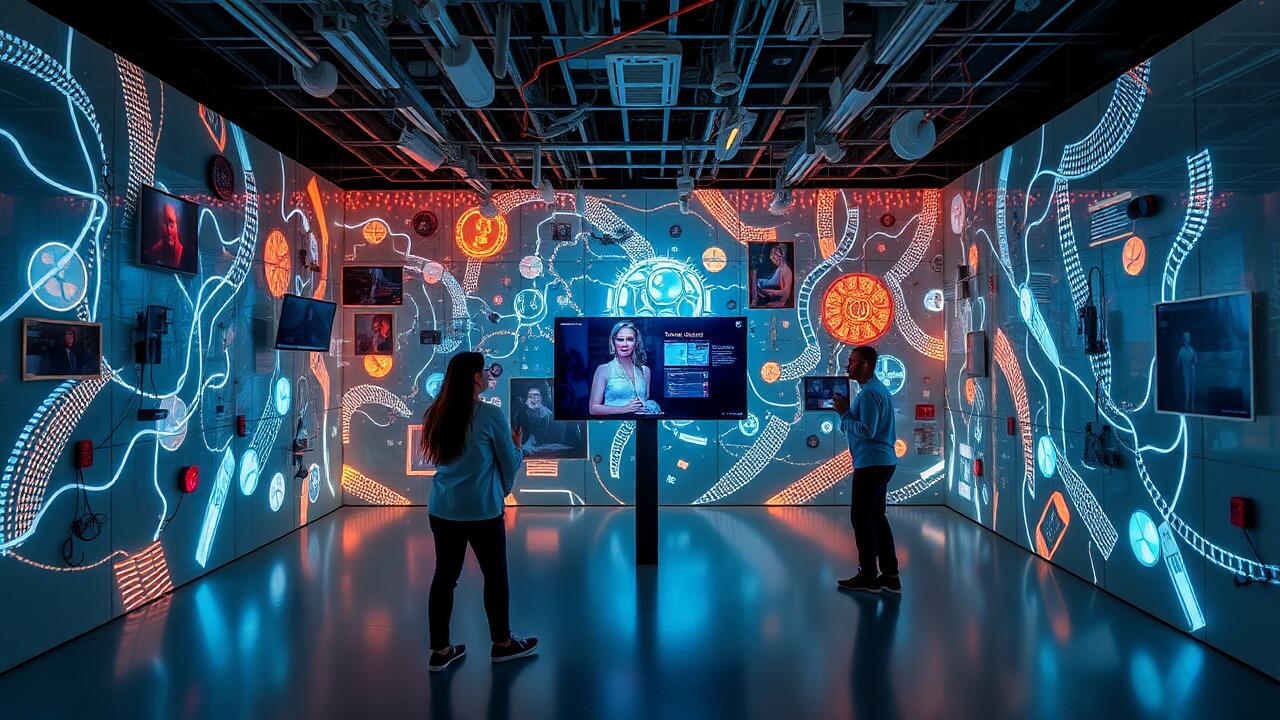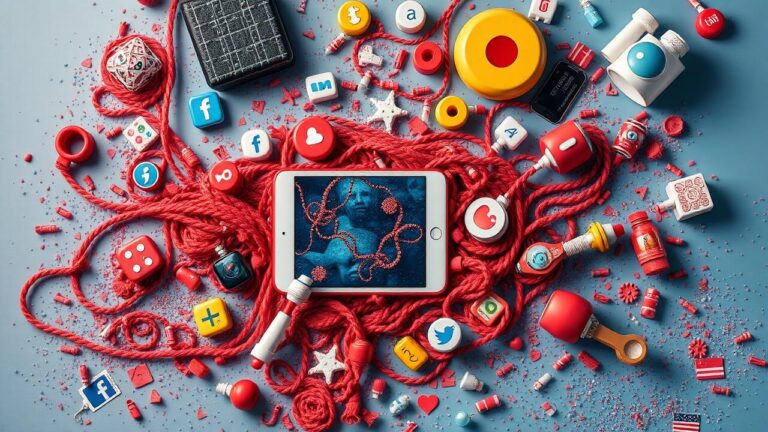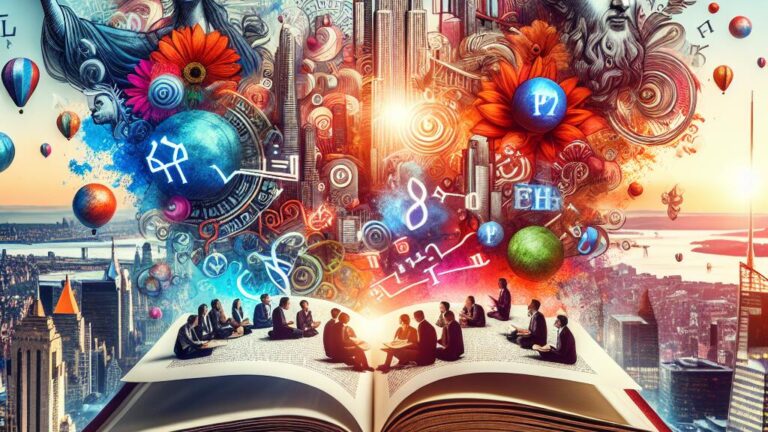Exploring the Intersection of Technology and Art in Digital Installations
Table Of Contents
Exploring the Intersection of Technology and Art in Digital Installations
Key Takeaways
- Examining the convergence of innovation and creativity in virtual exhibits
- The significance of innovation in electronic displays
- Investigating the blend of innovation and creativity
- The influence of virtual art displays on the community
Exploring The Intersection Of Technology And Art In Digital Installations | Understanding Digital Art Installations
Digital art installations represent a fascinating blend of creativity and modern technology, which fuels the ongoing transformation of contemporary art. These art installations often feature interactive elements that invite viewers to engage with the work of art in unprecedented ways. Digital artists leverage a variety of technologies to create immersive experiences, blurring the lines between viewer and artwork. This exploration of the intersection of technology and art in digital installations can be witnessed in the creation of digital paintings and other forms of digital artwork that challenge traditional perceptions. Such interactive installations not only redefine aesthetic boundaries but also encapsulate the essence of a rapidly evolving digital landscape, influencing how audiences perceive and appreciate works of art. Through this lens, digital art stands at the forefront of artistic innovation, highlighting the interplay between creativity and technological advancement.
Exploring the Intersection of Technology and Art in Digital Installations | Definition and Characteristics
Digital installations represent a fusion of art and technology, creating new dimensions for both visual art and audience interaction. Through the use of emerging technologies, artists are able to develop interactive art experiences that engage viewers in innovative ways. The integration of digital media, electronics, and digital fabrication techniques allows for the creation of immersive environments that blur the lines between traditional art galleries and online art galleries. These installations often utilize algorithmic art to enhance the visitor experience, showcasing how creativity can evolve in the digital age.
The characteristics of digital installations often highlight the role of accessibility and innovation in the contemporary art scene. Artists now leverage multimedia arts to craft experiences that are not only visually striking but also intellectually stimulating. The use of technology allows for dynamic interpretations that can adjust in real-time, fostering a dialogue between the art and its observers. As institutions embrace these advancements, the exploration of the intersection of technology and art in digital installations continues to transform the landscape of art galleries and public spaces alike.
Historical Context and Evolution
The emergence of digital art installations marks a significant moment in the history of art, showcasing the seamless integration of technology and creativity. Early pioneers began experimenting with computer-generated imagery and interactive design, leading to the development of immersive experiences that transform traditional paintings and sculptures into dynamic installations. Through the use of innovative tools such as augmented reality and advanced lighting, artists and technologists collaborate to create digital assets that challenge perceptions of art in general. This evolution reflects a broader trend, as the internet and computer systems continue to redefine the landscape of artistic expression.
The late 20th century witnessed a surge in innovation within the arts, as artists began to harness the potential of computers and digital technology. This era gave rise to groundbreaking works that incorporated virtual and augmented reality, allowing audiences to engage with art in unprecedented ways. Exploring the Intersection of Technology and Art in Digital Installations became a focal point for many, leading to collaborative projects that blend artistic vision with technical expertise. As a result, the evolution of digital installations has sparked new dialogues about the role of technology in shaping cultural experiences, pushing boundaries, and expanding the definitions of art itself.
- The development of digital art installations has fostered interdisciplinary collaborations between artists and technologists.
- Increased accessibility to digital tools has allowed emerging artists to experiment with new forms of expression.
- Interactive digital art installations provide opportunities for audience engagement and participation.
- The integration of social media has enabled wider dissemination and interaction with digital artworks.
- Evolving technologies continue to push the boundaries of creativity, allowing for richer sensory experiences.
- Digital art installations often address contemporary issues, reflecting societal changes and cultural dialogues.
- The rise of NFTs (non-fungible tokens) has created new avenues for artists to monetize their digital works.
The Role of Technology in Digital Installations
The role of technology within digital installations is pivotal in shaping the aesthetics and experiences of contemporary art. Exploring the intersection of technology and art in digital installations leads to the creation of dynamic sculptures and interactive art installations that push the boundaries of creativity. Digital art formats allow artists to experiment with innovative tools and techniques, enhancing the viewer’s engagement with the artwork. As digital platforms continue to evolve, digital artists today embrace a digital landscape rich with possibilities, contributing to a digital art renaissance. Through digital innovation, these creators are not only redefining traditional art spaces but also fostering new dialogues about art’s role in society. The incorporation of technology invites audiences to experience art in ways previously unimaginable, embodying the essence of exploring the intersection of technology and art in digital installations.
Innovative Tools and Techniques
The convergence of technology and art has given rise to a myriad of innovative tools, enriching the landscape of digital installations. Art establishments utilize advanced digital tools and mediums to create immersive digital experiences. Cutting-edge technology covers ways to enhance interactivity within installations, transforming traditional art projects into engaging public installations. As digital galleries evolve, they embrace new technology that allows visitors to participate actively in the art, making the experience more memorable and inclusive.
Innovative technology facilitates the development of interactive installations that become central to the viewer’s experience. Digital agencies are at the forefront of these creative endeavors, fostering collaborations that push the boundaries of artistic expression. This digital transformation journey not only showcases the capabilities of modern tools but also invites audiences to explore the intersection of technology and art in digital installations. As artists experiment with various interactive techniques, they redefine the essence of engagement, making art relevant and dynamic in contemporary culture.
Interactive Elements and User Engagement
Interactive components in digital installations have revolutionized the contemporary art scene, allowing audiences to actively engage with the artwork. Exploring the intersection of technology and art in digital installations introduces various technologies that enhance user experience. Artists often incorporate digital manipulation and interactive light installations, transforming static exhibits into dynamic experiences. This integration not only showcases artistic innovation but also fosters deeper connections between art enthusiasts and the work on display.
The emphasis on user engagement reflects a shift in the contemporary art world towards more immersive experiences. Tech integration in these installations enables a dialogue between the audience and the artwork, pushing the boundaries of what art can be. Art websites frequently highlight the role of new technologies in creating interactive elements, showcasing how they contribute to the overall impact of an installation. Such advancements also raise questions about the technological feasibility of complex projects, encouraging collaboration between artists and technologists to explore these possibilities.
Exploring the Intersection of Technology and Art
The landscape of artistic expression has dramatically shifted with the rise of advanced technologies, leading to a new paradigm where artists are actively integrating digital media into their creations. In this evolving artistic space, interactive artworks and multimedia experiences emerge as prominent forms, captivating audiences in ways that static artworks cannot. Artists are now leveraging technological resources to develop innovative interactive installations, such as virtual reality installations and interactive sculptures, which invite viewers to become participants in the creative process. This blend of artistic vision and technological components exemplifies the synergy between traditional art forms and modern technology. The possibilities of Exploring the Intersection of Technology and Art in Digital Installations continue to expand, opening doors for artists to craft amazing art that resonates deeply within the contemporary art world.
Collaborative Projects Between Artists and Technologists
The digital age has opened up new avenues for collaboration between artists and technologists, reshaping the landscape of artistic expression. Artists leverage advanced tools such as projection installations and computer tech programs today to expand their creative horizons. This partnership enables the creation of artworks that transcend traditional art forms, inviting audiences to engage with displays that stimulate both the mind and senses. Exploring the intersection of technology and art in digital installations has led to innovative projects that redefine what art can be.
These collaborations often result in unique projects that reflect a merging of artistic vision and technical expertise. Techies bring their knowledge of programming and digital platforms to the table, allowing artists to explore new dimensions of their artistic journey. While traditional art may have relied heavily on manual craftsmanship, the integration of technology lets creators experiment with interactivity and immersive experiences. By engaging in these collaborative endeavors, artists can push boundaries and create compelling narratives within their works, ultimately enriching the art world.
Case Studies of Successful Digital Installations
Successful digital installations often exemplify the fruitful relationship between creators and technology, pushing the boundaries of artistic expression. These innovative works showcase how traditional artworks can evolve through interactive displays, allowing for a dynamic dialogue between the art and its audience. Artists engage in creative exploration, redefining their artistic concepts while inviting viewers to partake in their artistic process. By utilizing the internet and urban landscapes, these installations become a canvas for artistic creations that resonate with diverse public experiences.
One notable example is the interactive installation that transforms the urban environment into a living gallery. Through immersive visuals and soundscapes, the art changes in response to audience participation, creating a unique interactive experience. This engagement draws people into a deeper connection with the artwork, highlighting the importance of exploring the intersection of technology and art in digital installations. As viewers interact with the creative vision at play, they expand their creative horizons while exploring how modern technology can enhance artistic appreciation.
The Impact of Digital Art Installations on Society
Digital art installations serve as a dynamic platform where artistic creativity converges with technological advancements, showcasing a new art form that redefines traditional artistic practices. Exploring the Intersection of Technology and Art in Digital Installations allows new artists to collaborate with tech experts, utilizing innovative tools to craft ground-breaking artwork that captivates audiences. Virtual exhibitions enable seasoned art collectors and art students alike to experience these works in immersive environments, fostering a dialogue about the significance of such tech blend in various arts. As viewers engage with these installations, their perceptions are transformed, highlighting the evolving role of art in society and paving the way for future artistic endeavors.
Audience Experience and Perception
Art installations have dramatically transformed audience experience by blending physical spaces with digital realms. Many artists are exploring the intersection of technology and art in digital installations, utilizing innovative tools and techniques to create immersive environments. These interactive experiences not only captivate viewers but also invite them to engage directly with the artwork. Collaboration between artists and engineers enhances these projects, as tech leaders contribute relevant innovations that address the technical challenges involved in building sophisticated interactive setups.
The perception of art within physical galleries is evolving as visitors encounter dynamic imagery and real-time interactions. This shift encourages audiences to become active participants rather than passive observers. Artists and technologists work hand in hand to develop experiences that challenge traditional notions of spectatorship. As digital installations continue to grow in popularity, they redefine how audiences connect with art, making each visit a unique exploration of creativity and technology.
Challenges and Controversies
Digital installations represent a fascinating art form that challenges traditional art forms, prompting lively discussions about their value and reception. Designers and artists often confront skepticism regarding the artistic merit of these interactive aspects. The integration of cutting-edge technology in exhibitions can lead to mixed reactions from audiences who may prefer the tangible experiences offered by a diverse art collection. The rise of responsive installations raises questions about authenticity and the role of the viewer, especially as many of these experiences extend to virtual ones online.
The 21st century has seen a transformative shift in how art is perceived, often blurring the lines between creators and consumers. Exploring the intersection of technology and art in digital installations has led to collaborative projects that showcase multidisciplinary innovation but also incite controversy. Creative masterpieces utilizing light displays and other technological advancements may not always find a welcoming space in traditional galleries. These challenges highlight the ongoing dialogue about the future of art in an increasingly digital landscape.
| Challenge | Description | Impact on Art Community |
|---|---|---|
| Skepticism about Artistic Merit | Concerns about whether digital installations are considered “true” art or merely technology showcases. | Leads to debates among artists, critics, and collectors regarding the value of digital works. |
| Viewer Engagement | Responsive installations raise questions on the role and involvement of the audience in the artistic experience. | Challenges traditional concepts of artistic appreciation and creativity. |
| Space in Traditional Galleries | Resistance from traditional galleries to incorporate digital installations into their exhibitions. | May restrict exposure and recognition for digital artists and their innovative works. |
| Authenticity in Virtual Experiences | Concerns regarding the genuineness of virtual art experiences compared to physical ones. | Creates a rift in how art is valued and experienced in the digital age. |
Conclusion
Digital installations are revolutionizing the artistic landscape by blending technology with traditional forms of expression. Exploring the Intersection of Technology and Art in Digital Installations highlights how these innovative works transcend the boundaries of normal art, creating immersive experiences that engage audiences in unique ways. Establishments are increasingly recognizing the potential of these visual compositions as valuable tools for artistic exploration. Through eclectic galleries and dynamic exhibitions, artists are incorporating interactive elements that encourage viewer participation, thus fostering a deeper artistic context. As art breaks away from conventional frameworks, the influence of technology opens new avenues for creativity and interaction, showcasing the profound impact of digital installations on the contemporary art scene.
FAQS
How do interactive installations in a digital art space utilize technological aspects to engage visitors with their own art works?
Interactive installations in an art gallery represent a unique fusion of digital mediums and technology, creating a vibrant technology landscape where digital elements come alive. As technology changes, the way art grabs people also evolves, allowing artists to create eclectic gallery experiences that highlight various digital art forms. These innovative installations become a fun way to explore how technology converges with art, encouraging visitors to interact and utilize tools that enhance their experience of the final artwork.
How can a digital art space enhance visitor engagement through the use of technological aspects in interactive installations?
In a digital art space, interactive installations let visitors engage with their own art works, making the experience more immersive and enjoyable. As these interactive installations become increasingly sophisticated, they use various technological aspects to create fun environments that encourage creativity and participation.
How can interactive installations make visiting a digital art space a fun and engaging experience for audiences?
Interactive installations in a digital art space often become a platform where art lets visitors immerse themselves in unique experiences, making the visit not just enjoyable but also memorable. These installations create a fun environment that encourages audience participation, transforming passive observation into an active engagement with the art.
How do interactive installations in a digital art space become a fun experience for audiences?
Interactive installations can become a fun experience for audiences by engaging them in unique ways that allow personal expression. These interactive installations often invite participation, making each visit memorable and enjoyable as visitors create their own narratives through the art.
How do interactive installations in a digital art space create fun experiences for audiences?
Interactive installations in a digital art space become a fun experience for audiences by engaging them actively with the art. Through immersive technologies and creative designs, these interactive installations encourage participation, making the visit enjoyable and memorable.
What techniques do interactive installations apply in a digital art space to ensure the experience becomes fun for the audience?
Interactive installations focus on engaging the audience through various techniques, ensuring their experience becomes fun by incorporating playful elements, real-time feedback, and participatory features. These aspects of interactive installations create an immersive atmosphere that enhances visitor involvement and enjoyment, ultimately making the entire experience more memorable and engaging.
How can interactive installations in a digital art space become a source of fun for visitors?
Interactive installations in a digital art space become a source of fun for visitors by using engaging elements that encourage participation and creativity. These interactive installations often include various technologies, allowing audiences to immerse themselves in the experience, leading to memorable moments that highlight the fun aspect of art.
In what ways can interactive installations in a digital art space contribute to the overall fun experience for visitors?
Interactive installations play a key role in enhancing the fun aspect for visitors in a digital art space. By allowing audiences to engage directly with the artworks, these interactive installations become immersive experiences, making the visit enjoyable and memorable. The various design choices and technologies employed ensure that the experience not only entertains but also invites participation, thus transforming how visitors perceive and interact with art.
What innovative features do interactive installations incorporate to ensure that the experience becomes fun for the audience?
Interactive installations often utilize engaging technologies and creative designs, making the audience’s experience fun by allowing participation and immersive interactions. Through these innovative features, the connection between technology and creativity is highlighted, showing how interactive installations becomes a lively and enjoyable component of the overall visitor experience.
What strategies can be employed to make interactive installations more fun for visitors in a digital art space?
To enhance the fun in interactive installations, digital art spaces can incorporate gamification elements, engaging narratives, and user-friendly designs that invite participation. By focusing on interactive installations that encourage spontaneous interaction and collaborative experiences, visitors are more likely to find the experience enjoyable and memorable.






